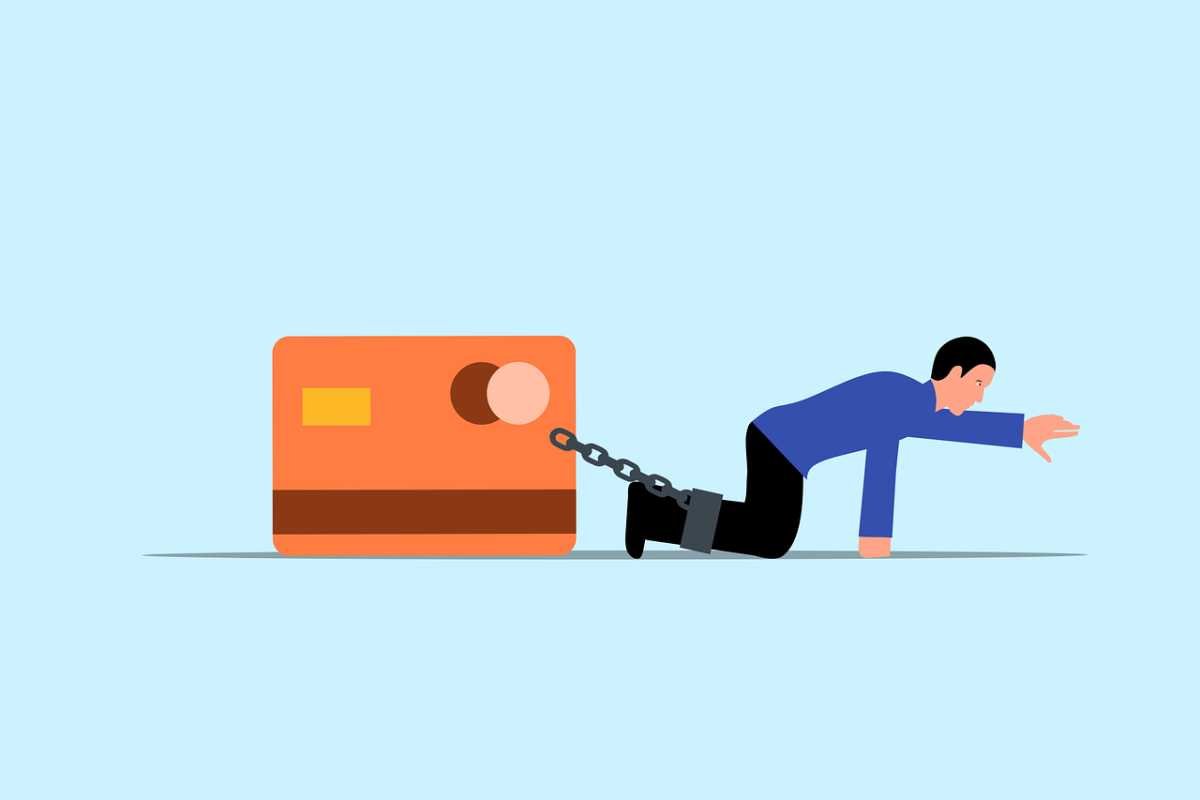Financial stress can weigh heavily on our minds, affecting all areas of life—from relationships and mental well-being to physical health. Many people feel trapped in a cycle of debt, expenses, and never-ending financial obligations. But the good news is that freedom from financial worry is possible. With the right mindset, habits, and strategies, you can regain control of your finances and live with more peace and security.
Here’s how to achieve freedom from financial worry.

1. Create a Solid Budget
One of the first and most important steps toward financial freedom is creating and sticking to a budget. A well-thought-out budget helps you see where your money is going and ensures that you are spending within your means. It also gives you a clearer picture of where you can cut back and save.
Steps to Create an Effective Budget:
- List your income: Write down all your sources of income.
- Track your expenses: Record every expense, including rent/mortgage, groceries, utilities, entertainment, and transportation.
- Categorize expenses: Divide them into fixed (necessities) and variable (wants) categories.
- Set spending limits: Allocate a reasonable amount to each category and stick to it.
- Review and adjust: Regularly review your budget and make adjustments as needed.
2. Pay Off Debt Strategically
Debt can feel like an anchor that holds you back from financial freedom. To reduce financial anxiety, it’s important to have a plan to pay off debt strategically. There are two common methods to tackle debt:
Debt Avalanche vs. Debt Snowball:
- Debt Avalanche: Focus on paying off the debt with the highest interest rate first while making minimum payments on the rest. This approach saves you more money in the long run.
- Debt Snowball: Pay off the smallest debt first to gain momentum and motivation, then move on to the next smallest. This method provides a psychological boost as you see quick progress.
Choose the method that works best for you, but the key is to be consistent and disciplined.
3. Build an Emergency Fund
An emergency fund is your safety net when life throws unexpected challenges your way, such as medical emergencies, car repairs, or job loss. Having an emergency fund gives you peace of mind, knowing you have a cushion to fall back on without needing to rely on credit cards or loans.
How to Build an Emergency Fund:
- Start by saving a small amount regularly—no matter how small, it adds up over time.
- Aim for 3-6 months’ worth of living expenses.
- Keep your emergency fund in a separate, easily accessible savings account.
4. Cut Unnecessary Expenses
We often spend money on things we don’t really need. By cutting back on non-essential expenses, you can save more and direct your money toward more important financial goals. Review your budget and identify areas where you can cut back.
Common Areas to Cut Back:
- Subscriptions: Cancel unused streaming services, magazine subscriptions, or gym memberships.
- Dining out: Limit eating out and cook meals at home more often.
- Impulse buys: Avoid spontaneous purchases by sticking to a shopping list.
Even small savings in these areas can accumulate over time, reducing financial stress and freeing up money for savings or debt repayment.

5. Increase Your Income
While cutting expenses is an important part of achieving financial freedom, sometimes it’s necessary to focus on increasing your income as well. Whether through a side hustle, freelance work, or advancing your career, earning extra income can accelerate your path to financial peace.
Ways to Increase Income:
- Take on a side hustle: Look for gig economy jobs, freelancing opportunities, or part-time work that fits your schedule.
- Ask for a raise: If you’re doing well at your current job, consider negotiating for a raise or promotion.
- Develop new skills: Invest in yourself by learning new skills that can lead to higher-paying opportunities.
6. Automate Savings
One of the easiest ways to ensure you’re saving money consistently is to automate your savings. Set up automatic transfers from your checking account to your savings account each month. This takes the decision-making out of saving, ensuring that a portion of your income goes toward building your future without having to think about it.
Benefits of Automating Savings:
- Reduces the temptation to spend money that could be saved.
- Helps you reach savings goals faster.
- Builds a habit of saving without requiring willpower or constant attention.
7. Invest for the Future
Once you’ve built up an emergency fund and paid off high-interest debt, the next step is to invest for the future. Investing allows your money to grow over time, helping you achieve long-term financial goals such as retirement, buying a home, or funding education.
Basic Investment Options:
- 401(k) or IRA: Contribute to a retirement account to take advantage of tax benefits and employer matching (if available).
- Stock market: Consider investing in low-cost index funds or ETFs to grow your wealth over time.
- Real estate: If you have the capital, investing in real estate can provide passive income and long-term appreciation.
The earlier you start investing, the more time your money has to grow through compound interest.
8. Protect Your Finances with Insurance
Insurance is an important aspect of financial protection. While it may seem like an unnecessary expense, having the right insurance policies can save you from catastrophic financial losses in the event of accidents, illnesses, or other unexpected events.

Essential Insurance Policies:
- Health insurance: Covers medical expenses and protects you from high healthcare costs.
- Home or renters insurance: Protects your home or belongings from damage or theft.
- Life insurance: Provides financial support to your loved ones in the event of your passing.
- Disability insurance: Replaces lost income if you’re unable to work due to injury or illness.
9. Plan for Retirement
One of the biggest financial concerns people have is whether they will have enough money for retirement. Planning for retirement early can help ease that worry and ensure you have enough to live comfortably once you stop working.
Steps to Plan for Retirement:
- Set retirement goals: Determine how much you’ll need to retire comfortably.
- Start contributing now: Begin contributing to retirement accounts as early as possible, even if it’s a small amount.
- Maximize employer contributions: If your employer offers a 401(k) match, contribute enough to take full advantage of it.
- Consider different retirement accounts: Diversify your retirement savings by contributing to both tax-deferred (like traditional IRAs) and tax-free (like Roth IRAs) accounts.
10. Adopt a Mindset of Financial Abundance
Financial freedom isn’t just about numbers on a spreadsheet—it’s also about mindset. Adopting an abundance mindset, where you believe that financial success is achievable and that you can take control of your money, is crucial for reducing financial stress. Avoid thinking in terms of scarcity, where you constantly feel like there’s never enough.
Tips for an Abundance Mindset:
- Practice gratitude for what you already have.
- Focus on opportunities to grow your wealth rather than dwelling on limitations.
- Surround yourself with positive influences that encourage financial growth.
11. Stay Educated and Informed
Financial literacy is key to making smart money decisions. By educating yourself about personal finance, you can better understand how to manage money, avoid common financial pitfalls, and make informed decisions that lead to financial security.
Ways to Stay Informed:
- Read books on personal finance: Books like The Total Money Makeover by Dave Ramsey or Rich Dad Poor Dad by Robert Kiyosaki provide practical advice on managing money.
- Take online courses: Many platforms offer courses on budgeting, investing, and financial planning.
- Follow financial blogs or podcasts: Staying updated on financial tips and trends can help you stay on track.
12. Regularly Reevaluate Your Financial Goals
Your financial situation and goals will change over time, so it’s important to regularly evaluate your finances and adjust your plans as needed. Whether you’re planning for a major life event, such as buying a house or starting a family, or simply revisiting your savings goals, keeping track of your progress will help you stay on course.
When to Reevaluate:
- Yearly check-ins: Set aside time each year to review your budget, investments, and financial goals.
- After major life changes: Adjust your financial plan if you experience a significant life change, like a job change, marriage, or the birth of a child.
Conclusion
Achieving freedom from financial worry isn’t an overnight process, but with consistent effort and the right strategies, it’s absolutely possible. By creating a budget, paying off debt, building savings, and investing in your future, you can reduce financial stress and enjoy peace of mind. The key is to take control of your finances step by step and remember that small changes can lead to significant results over time.
Start today and work toward a financially secure and worry-free future!

